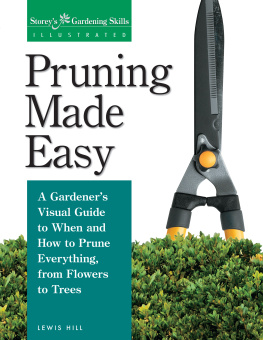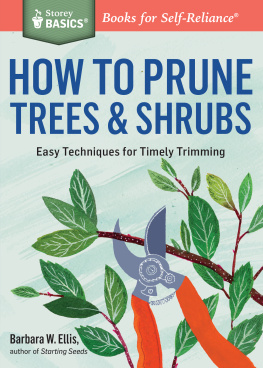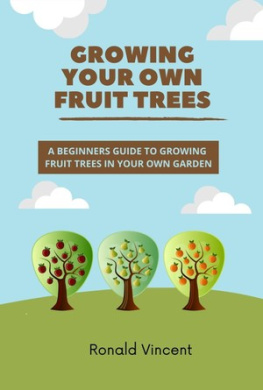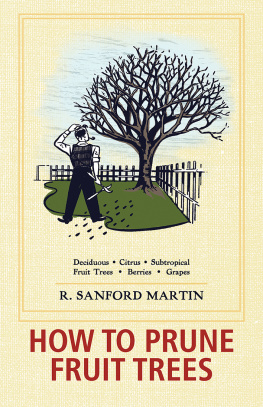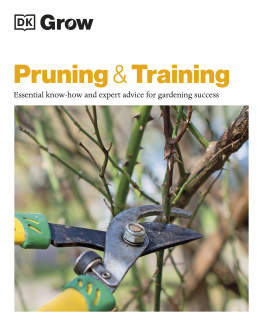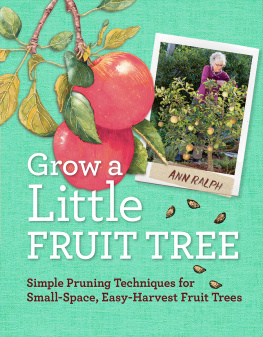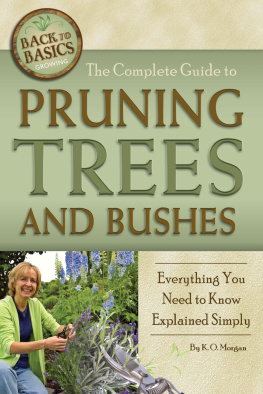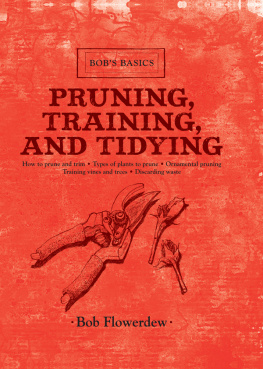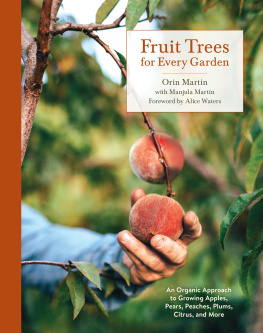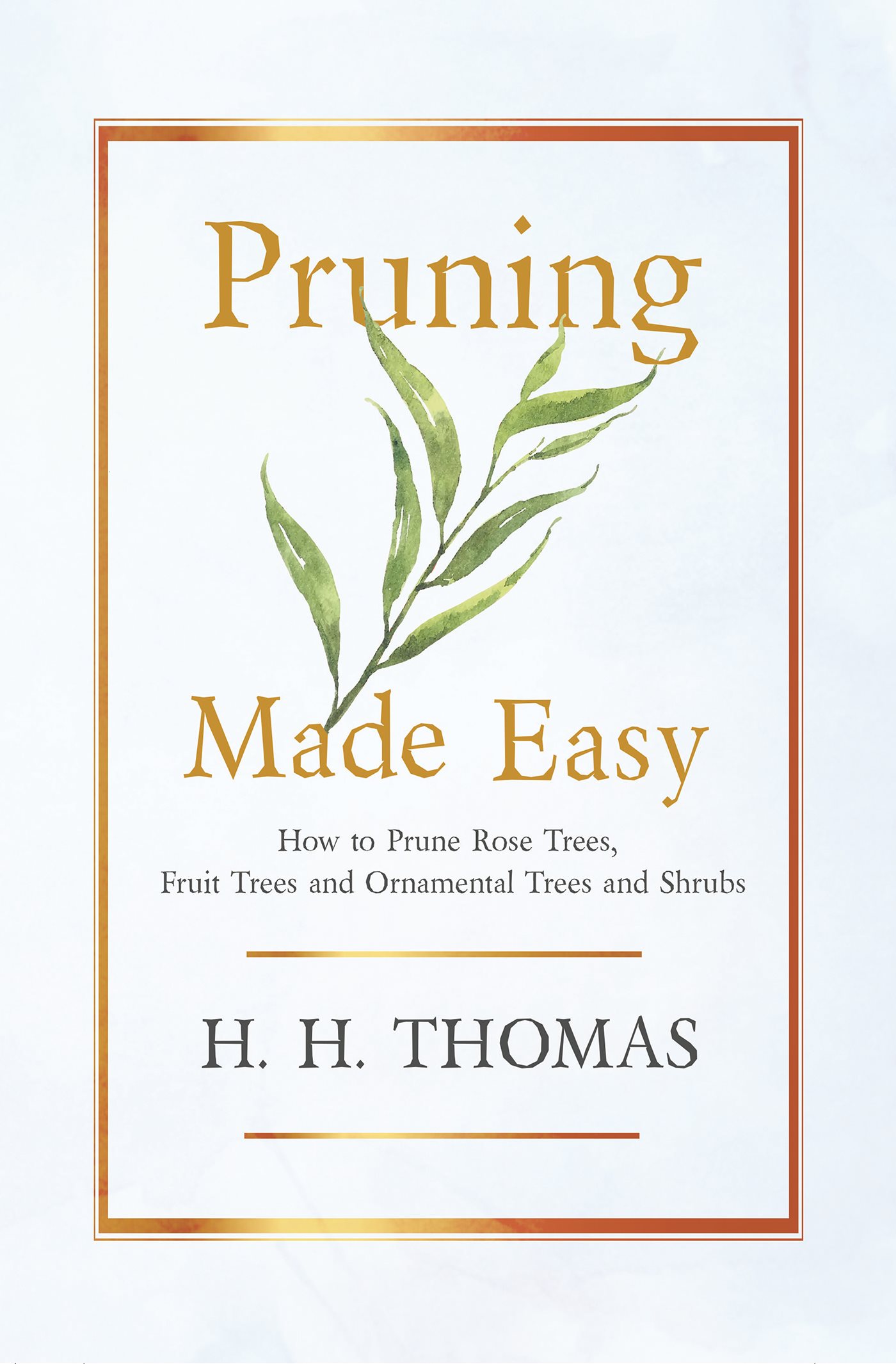PRUNING
MADE EASY
HOW TO PRUNE ROSE TREES,
FRUIT TREES AND
ORNAMENTAL TREES AND SHRUBS
Editied By
H. H. THOMAS
First published in 1927
This edition published by Read Books Ltd.
Copyright 2019 Read Books Ltd.
This book is copyright and may not be
reproduced or copied in any way without
the express permission of the publisher in writing
British Library Cataloguing-in-Publication Data
A catalogue record for this book is available
from the British Library
Contents
A Short History of Gardening
Gardening is the practice of growing and cultivating plants as part of horticulture more broadly. In most domestic gardens, there are two main sets of plants; ornamental plants, grown for their flowers, foliage or overall appearance and useful plants such as root vegetables, leaf vegetables, fruits and herbs, grown for consumption or other uses. For many people, gardening is an incredibly relaxing and rewarding pastime, ranging from caring for large fruit orchards to residential yards including lawns, foundation plantings or flora in simple containers. Gardening is separated from farming or forestry more broadly in that it tends to be much more labour-intensive; involving active participation in the growin g of plants.
Home-gardening has an incredibly long history, rooted in the forest gardening practices of prehistoric times. In the gradual process of families improving their immediate environment, useful tree and vine species were identified, protected and improved whilst undesirable species were eliminated. Eventually foreign species were also selected and incorporated into the gardens. It was only after the emergence of the first civilisations that wealthy individuals began to create gardens for aesthetic purposes. Egyptian tomb paintings from around 1500 BC provide some of the earliest physical evidence of ornamental horticulture and landscape design; depicting lotus ponds surrounded by symmetrical rows of acacias and palms. A notable example of an ancient ornamental garden was the Hanging Gardens of Babylon one of the Seven Wonders of the An cient World.
Ancient Rome had dozens of great gardens, and Roman estates tended to be laid out with hedges and vines and contained a wide variety of flowers acanthus, cornflowers, crocus, cyclamen, hyacinth, iris, ivy, lavender, lilies, myrtle, narcissus, poppy, rosemary and violets as well as statues and sculptures. Flower beds were also popular in the courtyards of rich Romans. The Middle Ages represented a period of decline for gardens with aesthetic purposes however. After the fall of Rome gardening was done with the purpose of growing medicinal herbs and/or decorating church altars. It was mostly monasteries that carried on the tradition of garden design and horticultural techniques during the medieval period in Europe. By the late thirteenth century, rich Europeans began to grow gardens for leisure as well as for medicinal herbs and vegetables. They generally surrounded them with walls hence, the wal led garden.
These gardens advanced by the sixteenth and seventeenth centuries into symmetrical, proportioned and balanced designs with a more classical appearance. Gardens in the renaissance were adorned with sculptures (in a nod to Roman heritage), topiary and fountains. These fountains often contained water jokes hidden cascades which suddenly soaked visitors. The most famous fountains of this kind were found in the Villa dEste (1550-1572) at Tivoli near Rome. By the late seventeenth century, European gardeners had started planting new flowers such as tulips, marigolds and sunflowers.
These highly complex designs, largely created by the aristocracy slowly gave way to the individual gardener however and this is where this book comes in! Cottage Gardens first emerged during the Elizabethan times, originally created by poorer workers to provide themselves with food and herbs, with flowers planted amongst them for decoration. Farm workers were generally provided with cottages set in a small gardenabout an acrewhere they could grow food, keep pigs, chickens and often bees; the latter necessitating the planting of decorative pollen flora. By Elizabethan times there was more prosperity, and thus more room to grow flowers. Most of the early cottage garden flowers would have had practical uses though violets were spread on the floor (for their pleasant scent and keeping out vermin); calendulas and primroses were both attractive and used in cooking. Others, such as sweet william and hollyhocks were grown entirely for t heir beauty.
Here lies the roots of todays home-gardener; further influenced by the new style in eighteenth century England which replaced the more formal, symmetrical Garden la franaise. Such gardens, close to works of art, were often inspired by paintings in the classical style of landscapes by Claude Lorraine and Nicolas Poussin. The work of Lancelot 'Capability' Brown, described as Englands greatest gardener was particularly influential. We hope that the reader is inspired by this book, and the long and varied history of gardening itself, to experiment with some home-gardening of their own. Enjoy.
PREFACE
IN every garden there are rose trees, fruit trees, or ornamental trees and shrubs, that need to be pruned annually, and the amateur is often at a loss to know how to proceed. Frequently he trims the trees without being at all sure whether he is doing the right thing. He is faced with the difficulty that trees need pruning at different seasons of the year, some must be cut back or thinned out, while others ought scarcely to be pr uned at all.
It is little wonder that he is bewildered and seeks refuge in a general tidying up, in the spring of the year, by cutting back all branches that seem in the way. Yet, as a perusal of this book will show, it is an easy matter to understand the principles that underlie the pruning of trees and shrubs; this practice is governed chiefly by the season at which they bloom. If he knows that, the amateur will soon realise why certain kinds are pruned in spring, others in summer, and so on. But if he proceeds in haphazard fashion and contents himself with a general trimming in autumn or spring, he is certain to spoil the display of some kinds and will fail to get the best from others.
This volume is separated into three parts which deal respectively with the pruning of roses, fruit trees, and ornamental trees and shrubs. Mr. A. Osborn has written the notes dealing with ornamental trees and shrubs, Mr. B. W. Price has contributed the chapter on Prune these Roses Lightly, and two or three of the chapters on pruning fruit trees are by Mr. J. Townend.
H. H. T.
PART I
PRUNING ROSE TREES
CHAPTER I
A Chat about Pruning
MANY rose-growers have their own theories on the subjct of pruning, and when in their own gardens those theories are put to the test and yield results that are satisfactory there is a likelihood that they may be broadcast and recommended to all and sundry. No doubt, in due course, methods of rose-tree pruning that are generally practised at the present time will become obsolete and will be replaced by others as the result of continued experiment, and in part will have been forced upon us by new types of roses. If we. compare the methods of pruning rose trees now found most suitable with those that were deemed best a generation ago, considerable differences will be discerneddifferences that are due chiefly to the fact that the roses themselves exhibit greater variety in habi t of growth.


